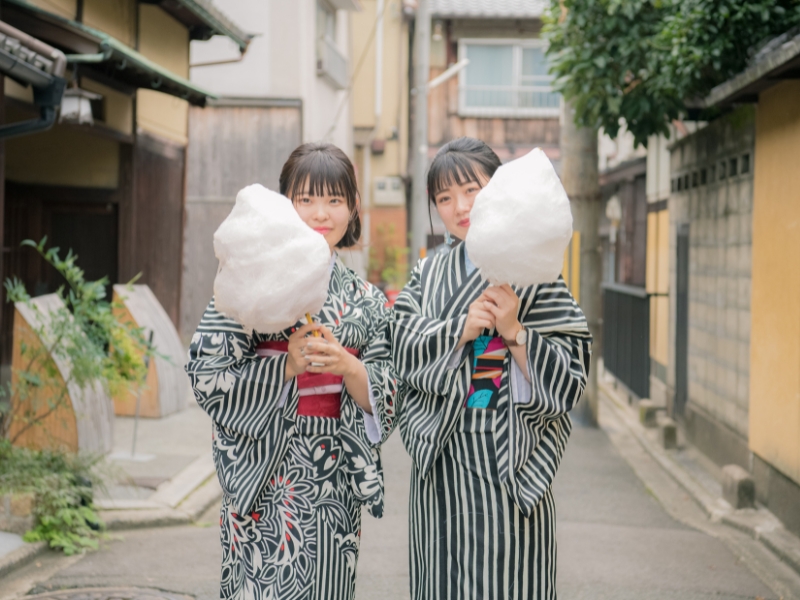Generation Z (Gen Z), known for their digital savviness, surprisingly finds value in analog products. Retro vinyls and cameras with film, in particular, have become global trends, with more young people seeing the charm in slightly old and inconvenient retro items. One of the most fascinating aspects of Gen Z is their ability to balance analog and digital worlds. Having both allows them to create new value by merging the tangibility of analog experiences with the convenience of digital technology. By understanding this trend, we can develop more effective marketing strategies and products that resonate with Gen Z’s unique preferences. So, what is driving this fascination? Allow us to introduce the global youth trends of analog products, as well as Japan’s unique retro boom.
Background
1. Digital Fatigue
Growing up in a world saturated with technology and digital devices, Gen Z frequently experiences information overload. Their smartphones cater to all their needs, from information retrieval to entertainment and education. Consequently, they find analog products refreshing and intriguing. This generation has a notable longing for the past, and analog items offer a chance to step back from the digital world and engage in self-reflection.
2. The “Emoi” of Analog
Japanese Gen Z is strongly drawn to the “emoi” aspect of analog products. “Emoi” is an emotional feeling commonly used among Gen Z in Japan, meaning an indescribable yet impactful sensation. For them, these products hold value not just as nostalgia but also as a means of new discovery.
Here are some examples of “emoi” in analog products:
- Vinyls:
Since Gen Z did not experience the golden age of records, listening to them provides an exciting sense of exploring an unknown world. This includes the joy of holding a physical object and the experience of focusing on the tangible experience. In an era where streaming is possible with a single finger tap, they find value in the effort of searching for a favorite record in a store and placing it on a player. Setting the needle on the record and the warmth of the sound that plays offers a special feeling that digital music cannot replicate. They find the unique sound of analog to be “emoi.”
- Film cameras:
Film cameras also hold great appeal for Gen Z. The poor image quality is ironically seen as “emoi,” and the time it takes for photos to develop, along with the tangible photos themselves, are cherished as special memories. Film cameras provide a physical experience of holding a photograph, offering a satisfaction that digital means cannot provide.
3. Dual Thinking of Digital and Analog Perspectives
Gen Z is accustomed to the convenience of digital technology, yet they also have a desire to cherish effort and experience. In other words, while they are interested in analog products, they efficiently use digital tools. This seemingly contradictory behavior can be explained by their enjoyment of “temporary analog experiences”.
In essence, Gen Z seeks analog experiences while relying on digital technology as their foundation. They are not necessarily convinced that analog is superior but enjoy the sensations it offers without wanting to replace everything with it. By holding both analog and digital perspectives and skillfully switching between them, they discover new value. This duality may be what appeals to Gen Z. Additionally, this duality is reflected in their behavior of sharing these analog experiences on social media, fostering new connections and empathy.
Retro experiences popular among Japanese Gen Z
Retro experiences are booming among Gen Z in Japan. Here, we’ll introduce some particularly popular experiences with modern youths that originated in the previous Japanese eras of Showa and early Heisei.
In Japan, “retro” generally evokes images of the Showa period due to its significant historical and cultural changes. The Showa era (1926-1989) offers nostalgic yet novel escapes for Gen Z, with activities like visiting Showa-style cafes. In the early Heisei era (1989-1999), Japan saw continued technological advancement and globalization. Experiences from this time, such as using older technology or participating in popular activities from the era, are now considered retro and are highly appreciated by Gen Z.
1. Jun-Kissa (Pure Cafés)
Jun-Kissa (純喫茶 lit. pure cafés) refers to cafés dedicated solely to the enjoyment of coffee. During the early Showa era, it was common for cafés to serve alcohol and offer entertainment in a “settai” setting, where business or social gatherings involved dining, drinking, and various forms of entertainment to foster relationships. In contrast, Jun-Kissa focused solely on serving coffee, tea, and light meals, similar to what we see in modern cafés today.
With their quiet and calm atmosphere reminiscent of Showa, Jun-Kissa are popular among Gen Z as places to relax and escape the busy everyday life. They provide an ideal environment for studying, reading, or enjoying quiet conversations with friends. Jun-Kissa serves classic menu items such as cream soda and flan. Furthermore, as most of these shops only accept cash, the act of using physical money adds an extra layer of nostalgia. This concept is akin to American diners where coffee is a staple enjoyed alongside a variety of classic dishes such as hamburgers, french fries, and onion rings, as well as traditional desserts. These diners often do not serve alcoholic drinks, focusing instead on simplicity and comfort, providing an unpretentious dining experience.

2. Capsule Machines

A capsule machine (aka Gacha) refers to vending machines that dispense toys or figures in capsules when you insert a coin and turn the handle. Popular during the Heisei era, these machines remain a favorite among tourists and have recently experienced a resurgence in popularity among Japan’s Gen Z. Nowadays, specialized stores dedicated to capsule machines have increased, offering a wide variety of capsule toys to enjoy. The greatest appeal of capsule machines is the excitement of not knowing what will come out. Gen Z expresses their individuality by collecting and customizing the items they receive, creating unique personal collections. The process of “turning the machine, collecting, customizing, and posting on social media ” is typical of Gen Z’s style.
3. Touring in Yukata and Kimono
In recent years, strolling around tourist spots while wearing yukata or kimono has become increasingly popular among Japan’s Gen Z. Popular destinations, especially among students, include Kawagoe, Asakusa, and Kyoto, which are rich in traditional Japanese charm. By taking a break from their digital routines and wearing traditional clothing, they immerse themselves in a unique and extraordinary experience. And to enhance that, retro kimonos have become a trend among Gen Z. While wearing traditional costumes is also popular among foreign tourists, who tend to choose flashy and colorful designs, Japanese youth prefer simpler, retro styles, allowing them to feel as if they have stepped back in time.

Conclusion
Incorporating nostalgic analog elements and concepts that evoke emotional resonance may be an effective strategy in product development for Japan’s Gen Z. Understanding the unique characteristics of this generation, who are digital natives yet find value in analog experiences, allows insights that highlight their emotional connections, such as sentimentality, inspiration, and transience. At Uism, we conduct qualitative UX research focused on Gen Z, gaining deep insights into their complex emotions and lifestyles. By understanding their perspectives, we offer proposals that are more aligned with user needs. If you are considering research targeting Gen Z, please feel free to contact us.



